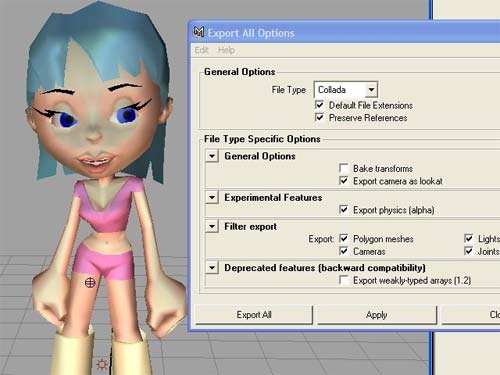Khronos Group also releases an upgrade to the OpenCollada import/export tool and SDK, and launches related projects.
Collada, the neutral interoperability format for 3D digital assets, is now an official ISO standard. The official announcement refers to Collada as a tool to “provide a reliable, long-term international standard for 3D asset authoring and interchange.” The official status is specific to Collada version 1.5.0. More information can be found online here.

The non-profit Khronos Group has been working for years to establish Collada as an ISO standard. In announcing the new status, the Khronos Group also says Its Collada working group has delivered a significant upgrade to the Collada open-source importer/exporter. The software is now hosted on GitHub for free; Khronos encourages software developers to take advantage of it as well as the upgraded OpenCollada SDK, available under the MIT license. Both are available free of charge for integration into commercial and proprietary tools as well as open source software products.
To support increased use of Collada, the Knronos Collada Working Group announces the formation of the new “glTF” project to define a final stage OpenGL Transmission Format to enable rapid delivery and loading of 3D content by OpenGL, OpenGL ES or WebGL APIs. Khronos says glTF together with Collada comprise a standards-based content pipeline for rich 3D web and mobile applications. Khronos will make drafts of the glTF file format publicly available during development to enable feedback and integration of requirements from the wider industry and will also create a sample open source Collada to glTF convertor.
Key requirements driving the development of glTF are:
- To match WebGL processing requirements, including using typed arrays within a browser
- To use JSON (JavaScript Object Notation) to be cross-platform and web-friendly
- To hold geometry and texture assets in binary blobs for future expandability of asset types that may include streaming and compression.
glTF is also intended to create market opportunities for run-time optimized 3D asset stores and repositories.
Finally, Khronos announces that the full Collada Test Suite is now also ported to GitHub and is free to use to test the quality of any Collada importer/exporter.
“The 3D community should have reliable open standard formats to use when access to their assets is at stake. Collada has always provided the guarantee of continuity, which is now significantly enhanced with an ISO endorsement,” said Neil Trevett, president of Khronos and vice president of Mobile Content at Nvidia. “But the foundation for any asset format is reliability, and now with the upgraded OpenCollada importer/exporter and the full Collada Test Suite freely available on GitHub everyone can have access to high-quality, cross-platform asset exchange.”





